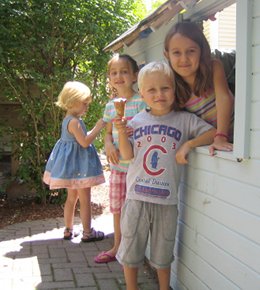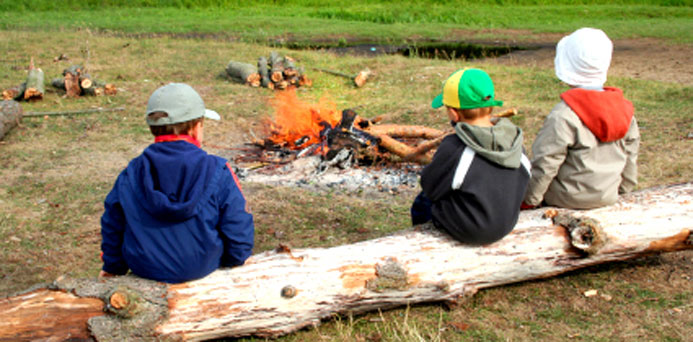 Camp Gitche Gumee, meet Camp Mwahaha.
Camp Gitche Gumee, meet Camp Mwahaha.
“We just wanted to make a camp that was fun,” says Kate Snellback, who started the neighborhood camp with the unforgettable name with her friend Margo Flynn.
The girls, both 13, of Wilmette, weren’t exactly looking forward to the dog days of summer—those weeks in August when most camps are over, and school is looming on the horizon. So they came up with the idea of a neighborhood camp. They made some flyers, and before you know it, they had seven kids enrolled for a week.
 “I gave the flyer to families I babysit,” Kate says.
“I gave the flyer to families I babysit,” Kate says.
The girls charged $10 per day per child, and the camp ran from 9 to 11 a.m. Campers were between the ages of four and seven.
“We made a lot of money!” Margo says.
And they made a lot of fun, too. Each day had a theme, from Halloween Day—yes, they all came in costume—to Water Fun Day, when they played with water balloons and a slip ‘n slide, and made homemade ice cream.
“Actually it was more like ice cream soup, but it tasted good,” Margo says.
In Evanston, Camp Kahn will be entering its fourth summer. Liza and Grace Kahn, 13 and 11, invite the younger neighborhood kids to their backyard from 9 a.m. to 12 p.m. every day for a week in August. They attract a group of about eight kids ranging in age from 6 to 10.
The camp culminates in a show for parents on Friday night, with campers performing skits they practiced during the week.
“We do different things each day: we make an ice-cream shop in our playhouse, we have a fair with games and prizes, we do gardening, we do basketball, we do a treasure hunt,” Liza says.
“I think we even tried to teach them how to knit one year!” Grace says.
The girls don’t charge a fee, but Grace says, “the parents give us really nice gifts,” at the end of the week.
All four girls had tips for someone thinking of starting a neighborhood camp:
- Plan each day in advance. The girls typed up schedules for the week, made lists and shopped for all supplies and snacks.
- Before each day begins, give yourself at least an hour to talk through the schedule and set up.
- Mix it up. Don’t do the same routine every day.
- Find activities that both boys and girls will like. Games like Capture the Flag are good.
- Divide into groups for activities like arts and crafts, where kids might need one-on-one help.
- Do the camp with a friend you feel comfortable with.
- Make sure to always have a Plan B. Duck duck goose or freeze dance can fill time when your partner is setting up the next activity.
- Top Photo: Grace Kahn, Grant Laczkowski, and Liza Kahn

